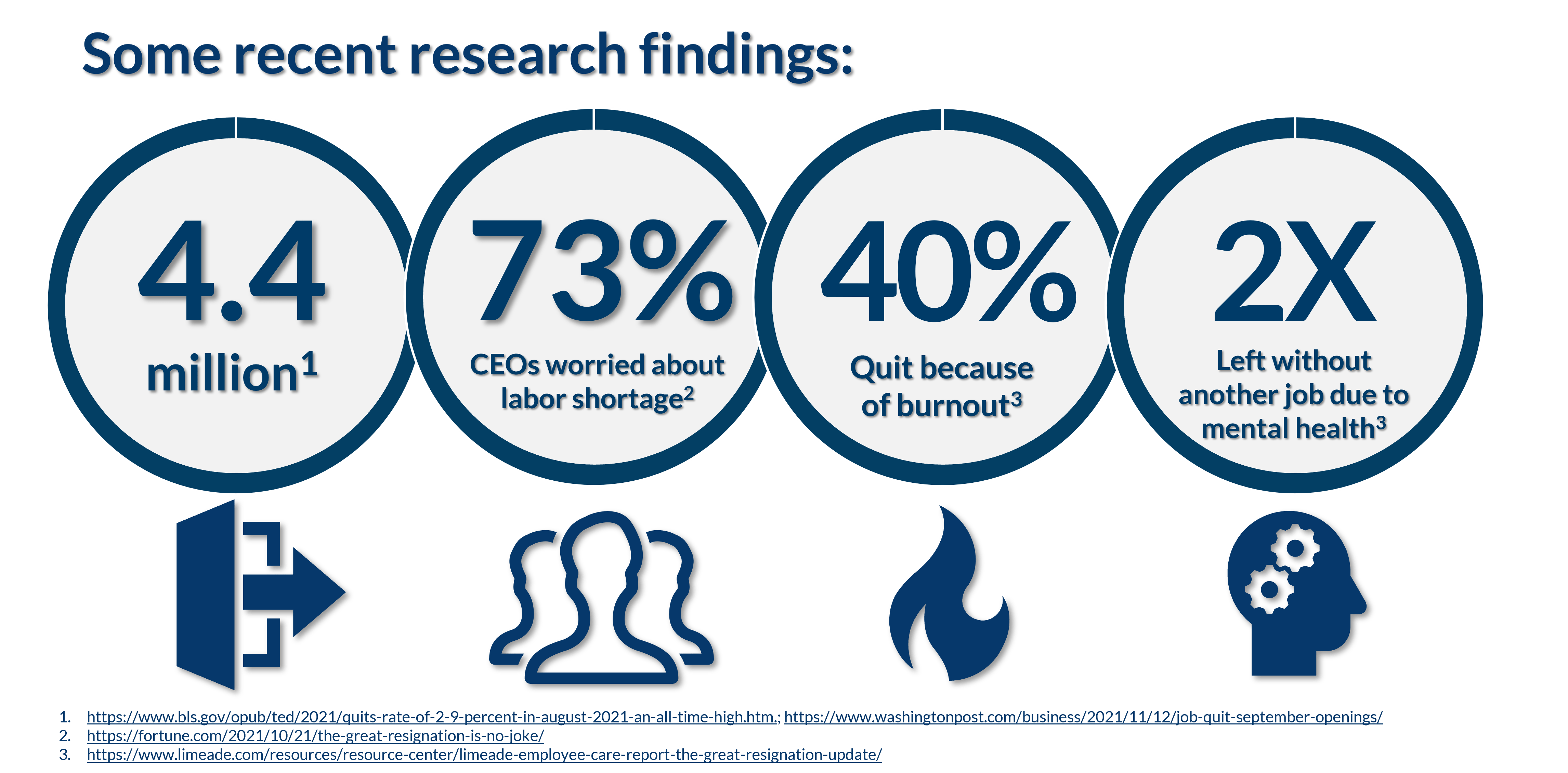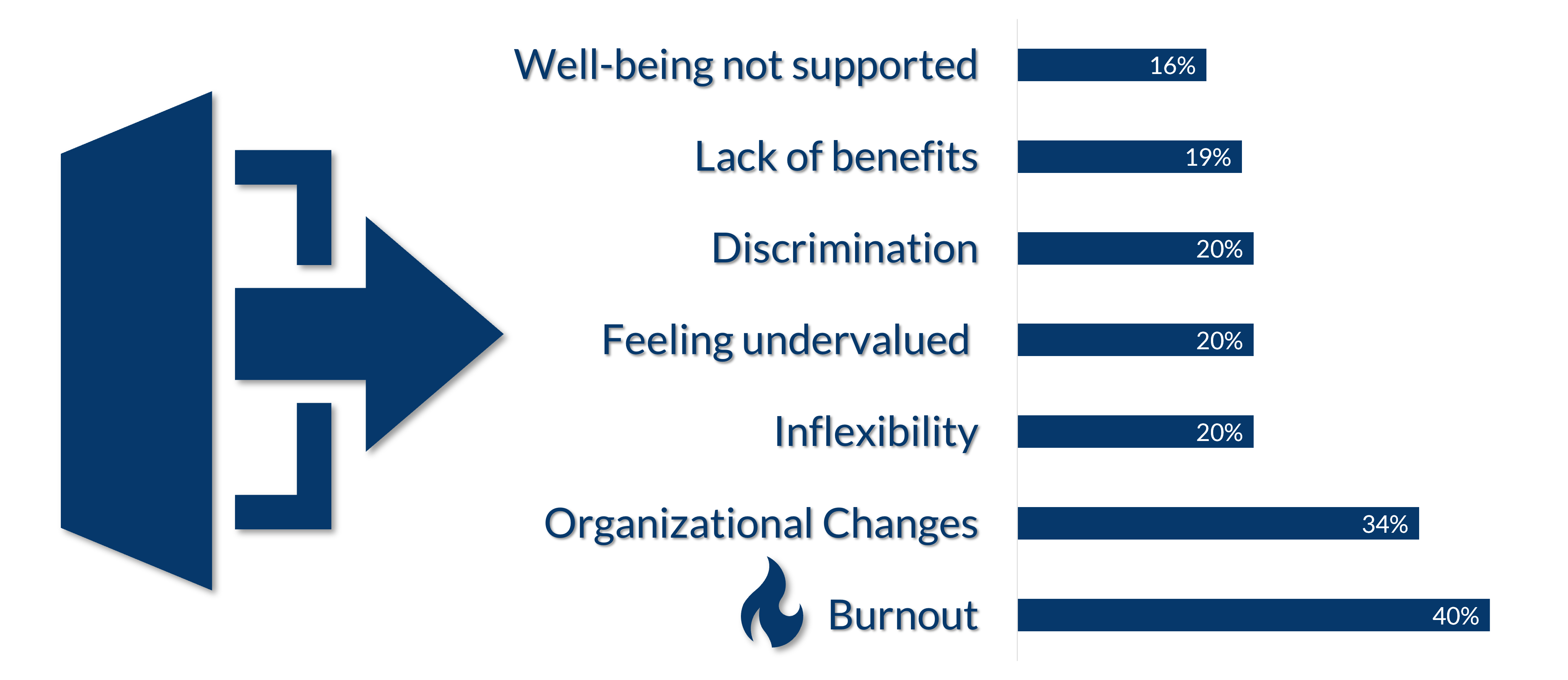Get Access to INSTANT, FREE TRAINING!
I was recently asked to do a presentation for a large network of HR professionals, trainers, and consultants. The topic was “Burnout and the Great Resignation: What You Should Know.”
Since this is such a hot topic, I recorded the session so that you can view it as well.
Click the Register button below to get access to the next available session, or an instant replay.
If you want to learn more before registering, read on.
Burnout and the Great Resignation
2021 was unprecedented in the number of individuals walking away from their jobs.
We called it “The Great Resignation.”
This term was first coined by Dr. Anthony Klotz, a professor at Texas A&M in his article, “The Covid vaccine means a return to work. And a wave of resignations.”
What he predicted in the spring arrived over the summer.

In August 2021, the U.S. Department of Labor reported that a record-breaking 4.3 million U.S. workers voluntarily quit their jobs. That translated to a quit rate of 2.9%, the highest ever recorded.
Then it climbed even higher in September, to 4.4 million. It settled back down to 4.2 million in October, but then reached an all-time high of 4.5 million in November.
Can I just say…YIKES. Those are some big numbers.
Lance Lambert of Fortune magazine can help put the numbers into perspective for us. He pointed out that, with those quit rates, a group of workers equal to the combined populations of North and South Dakota, Alaska, Wyoming, Vermont, and the District of Columbia, all quit their jobs – not just one month, but every month for at least 3 months of 2021.
According to a Fortune Analytics survey, nearly 3 out of every 4 (73%) of CEOs think that a labor/skills shortage will be the #1 external factor to disrupt business over the next year.
And that labor shortage is expected to linger. Goldman Sachs is predicting a 3.5% unemployment rate by the end of 2022.
Now, here’s the burning question: why did the employees quit?
According to a Limeade survey, 40% quit because they felt burned out.

Just to be clear, the employees mentioned other reasons for leaving as well. Burnout was the top reason at 40%, but you see the others on the above graph:
- Organizational changes was 2nd at 34%.
- It was followed by inflexibility of workplace conditions,
- Feeling undervalued,
- Feeling discriminated against,
- Lack of benefits, and
- Not getting enough support for their well-being.
(I would argue that these other factors can all raise our stress levels at work and therefore also provide fuel for burnout.)
Many left without having another job lined up. Those who did this were nearly 2X as likely to say that they left because their workplace was hurting their mental health.
From a neuroscience perspective, the events of the past couple of years seem to boil down to this:

The key factors here are stress and burnout. And so, if we learn to manage stress and burnout effectively, we may be able to change the outcome.
In a recent article for The Atlantic magazine, Derek Thompson reminded us that crises are often catalysts for widespread change. He cited some past examples:
- The Great Chicago fire of 1871 catalyzed the invention of modern skyscrapers.
- World War II not only catalyzed weapons and bombs; it also catalyzed the development of penicillin and flu vaccines.
But what changed during Covid-19?
Thompson writes:
“We may…look back to the pandemic as a crucial inflection point in something more fundamental: Americans’ attitudes toward work. Since early last year, many workers have had to reconsider the boundaries between boss and worker, family time and work time, home and office.”
The central question I wanted to explore in my recent training was, how can we reshape our work experience so that we avoid burnout and slow down or stop the great resignation?
Interested in this FREE training?
If so, click the Register button below to get instant access!

